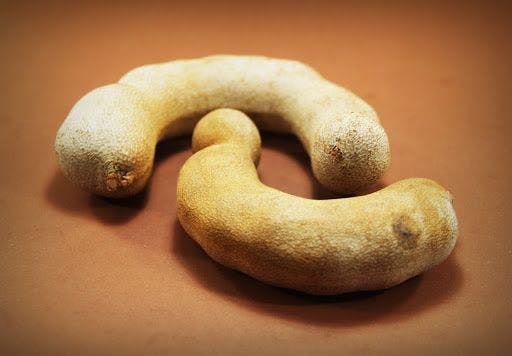your cart
Your cart is empty.
Recipes
General Articles
What is Tamarind Paste and How to Use it?

Anyone who has experience in cooking Asian or Caribbean cuisine is probably familiar with tamarind paste. Incredibly versatile, tamarind paste is used in plenty of dishes from various cultures that vary from sweet to savoury. It’s also a key ingredient in some drinks! You can often find tamarind paste as an ingredient in:
- Noodle recipes
- Curries
- Sauces
- Soups
- Desserts
- Candies
- Cocktails
Due to the acidity in it, tamarind is also good to use as a meat tenderiser and is actually an ingredient in Worcester sauce. But what exactly is tamarind paste? And how are you supposed to use it?
What is Tamarind Paste
Tamarind paste is derived from the fruit - specifically the pulp around the seeds - of the tamarind tree. This common hardwood fruit tree is native to Africa, but can now be found growing all across Asia and Mexico. The fruit of the tamarind tree can be found inside large brown pods. Once these pods have been harvested, the fruit is removed and separated from the seeds. This fruit then becomes the ready-to-use paste that can be added to your dishes.
What Does Tamarind Paste Taste of?
At first glance, it’s easy to say that tamarind paste isn’t the most appetising of ingredients. Surprisingly, the brown, gloopy paste actually has a sour taste that’s been compared to citrus fruits. It’s worth noting that dishes involving tamarind paste will need added sugar or some kind of sweetner in order to even out the sour flavour. As with any intense flavour combinations, it’s always best to taste test as you go so you can ensure you get the perfect balance of sweet and sour.
How to use Tamarind Paste
You can use tamarind paste right out of the jar - simply scoop out the amount you need and stir it into your dish. The strength and thickness of the paste can vary. Depending on the brand of tamarind paste you buy, you may need to stir or even dilute the paste with a bit of water before use. Our personal choice is the Pantai Tamarind Paste which is available now in our online store.
Tamarind Paste Nutritional Information
Much like the citrus fruit it’s compared to, tamarind paste is high in vitamin C as well as several B vitamins. It also contains a good amount of potassium, iron and phosphorus. Traditionally, tamarind paste has been used to help digestive issues, relieve a sore throat and even alleviate sunstroke. It’s even been used to break fevers and cool the body down.
How to Store Tamarind Paste
You should store tamarind paste in a cool dry place, so keeping it with all your other spices would be ideal. Some chefs have even suggested keeping tamarind paste in the fridge once opened in order to prolong the freshness. So long as it’s stored in a suitable container that’s properly sealed, you can store tamarind paste wherever you choose.
Tamarind Paste Recipes
As we’ve mentioned above, tamarind paste is an incredibly versatile ingredient and is key to a variety of dishes, sweet or savoury. But, in case you’re feeling inspired, here are some of our favourite dishes that include tamarind paste.
Pad Thai
Pad Thai is arguably one of the world’s favourite noodle dishes. Alongside the iconic green and red curries, you won’t find a Thai restaurant that doesn’t serve this dish.Pad Thai is made by stir-frying noodles with eggs, tofu, tamarind paste, fish sauce, shrimp, garlic, palm sugar and red chilli pepper. Frequently served topped with a scattering of peanuts, it’s no wonder that this delicious Thai street food continues to take the world by storm.
Curries
Much like lemon or lime, tamarind can add that little bit of bite to the otherwise rich flavours of coconut and sweet potato in many Southeast Asian curries.Why not try using cauliflower instead of protein and create a deliciously fragrant curry that’s suitable for vegetarians?
Cocktails
If you’re feeling adventurous, why not try a tamarind cocktail? Joining the earthy flavours of both tequila and tamarind can complement each other marvelously. Accentuate this with a little sweetness from simple syrup and then top off with the lively spice of ginger ale for a refreshing beverage that’s perfect for summer.
Where Can I Buy Tamarind Paste?
Being such a staple ingredient, tamarind paste is available from a variety of oriental supermarkets. Tamarind paste may also be available at your local supermarket in the international aisle, but we’d recommend buying from a Thai supermarket to support your local business!
How to Make Tamarind Paste
You can also try making your own tamarind paste. All you need is tamarind pulp and water. After you’ve removed the pod and cleaned the tamarind, soak the pulp in hot water for an hour. Once it’s softened enough for you to detach the seed, push the pod-water mixture through a sieve and voila!Tamarind paste is an essential ingredient for anyone who’s interested in Asian, African or Southern American cuisine. It’s cheap, cheerful and keeps for a long time! Grab some today and find your favourite flavour combination. If you’re feeling inspired, why not explore our range of other authentic Asian ingredients?
this site uses cookies
We and our advertising partners use cookies on this site and around the web to improve your website experience and provide you with personalised advertising from this site and other advertisers. By clicking allow, you accept the placement and use of these cookies for these purposes. Learn More



